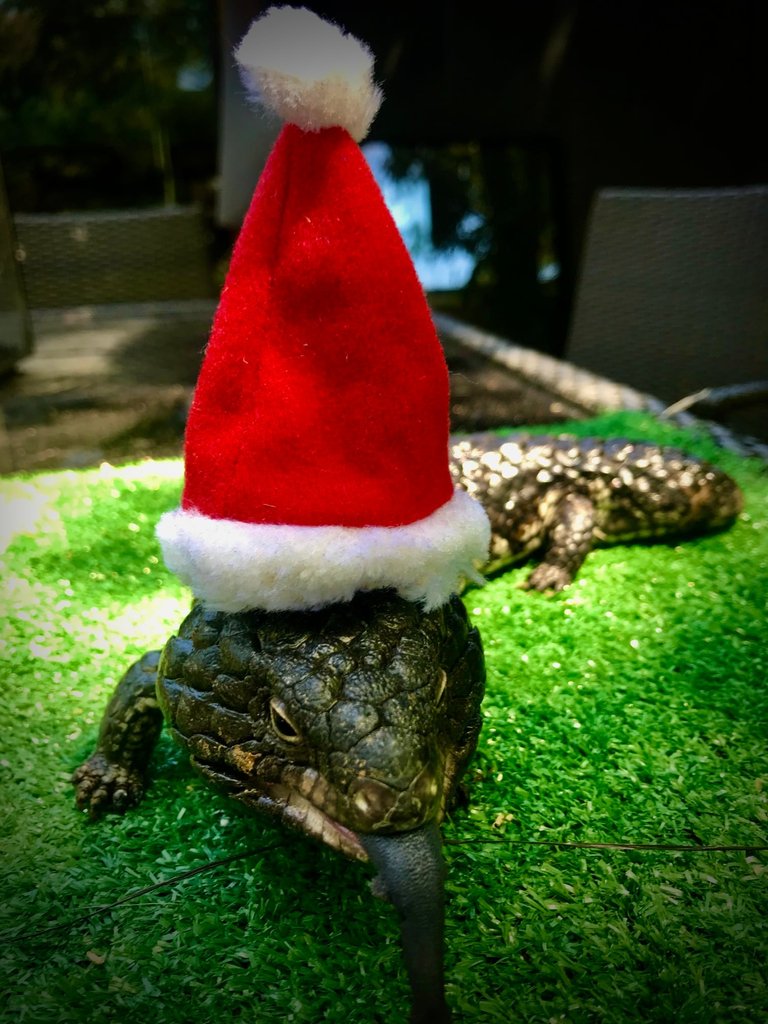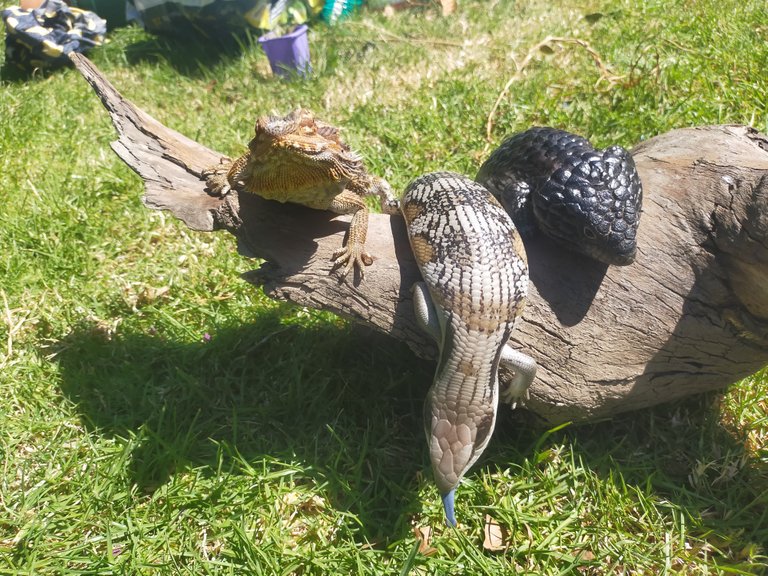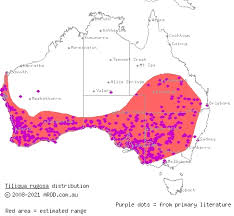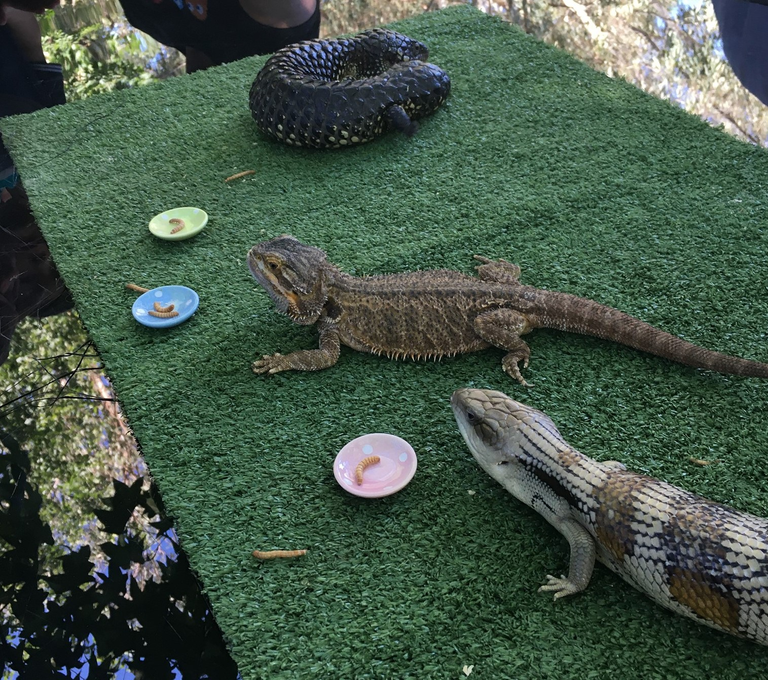Shingleback lizard or Stumpy-tailed lizard.
The shingleback lizard, also knows as the stumpy-tailed lizard is a close relative of the very well known blue-tongue.
For a lizard that can be found in every state in Australia bar Tasmania they are relatively unknown by most people.

Our shingleback getting into the Christmas spirit
Basic info.
Shingleback lizards grow to be around 30cm long and are omnivores, though ours prefers to eat vegetables and fruit over insects and meat.
As the name suggests their scales have a shingle like appearance and are larger than most other species.

Stumpy hanging out with a bluetongue and a bearded dragon
They can be found in dry, arid, desert like areas, as well as bushland or light scrub. They can inhabit areas with extreme temperatures but are yet to be found in the centre or top of Australia.

Shingleback distribution, free to use image from google
Shinglebacks are a fairly docile lizard but when threatened they will face the target and open their mouth wide, the dark blue of the tongue against the pink of the mouth as a defensive display.
They have evolved in a way that their tail looks very similar to their head and this is used to trick potential predators.
Keeping as a pet
In general these lizards do well in captivity. They are great for handling and aggression is not common in the species. They're also a fairly slow moving lizard which is good if you want to get them out to play with without risk of them sprinting off.

The shingleback we had who unfortunately died in the fire
They like a body temperature of 30-35 degrees Celsius so a basking light is essential, as is an area to cool down. A heat gradient is important when keeping any reptile in captivity as it allows them to maintain whatever body heat they desire. Overheating can be deadly and underheating can lead to long term issues.
They will also require a UVB light. UVB is essential to most species of reptile (at least in Australia). UVB helps them to synthesize calcium and without it they are vulnerable to a number of diseases and illnesses.
I have mentioned the UVB lights a lot when talking about reptiles but incorrect or lack of sunlight is one of the largest welfare issues they face.

Turning his nose up at mealworms
Adults should be fed around 3-5 times a week, a majority of fresh vegetables and insects is ideal. Mealworms, cockroaches, mince and snails are all ideal snacks for a shingleback.
Personally these guys are one of my favourites, they are great to handle and introduce to kids, they look and feel cool and as far as reptiles go they are pretty easy to care for.
All pictures are either mine or my family's unless stated otherwise